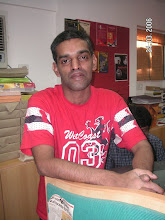 O V Vijayan
O V VijayanThe talk about unity and divisiveness has become a sick charade; but what is fearsome is that this charade is moving towards violent and painful resolutions. Resolved, not through conscious and intelligent historicity but in the bloody opportunism of centralising processes. The time has come for us to acknowledge in all humility that
Nor will a consideration of these be at variance with the predictions of the national movement. At no point during the fight for freedom was
Right till the transfer of power the Congress had a federal scenario in mind and so did the communists; only the Indian big bourgeoisie provided carping dissent and advocated a centralised state congruent with its centralised market. We enter, now, a hectic interregnum of renegacy and grab, with Gandhi suddenly pushed into the shadows, and the splendrous vistas of rulership unfolding before the erstwhile partisans of freedom. The Congress almost by stealth, jettisoned federalism, the cardinal principle on which half a century of its struggle was based. And most curiously the communists followed suit. The bourgeoisie was satisfied and so was the bureaucracy. From 1947 onwards, the building of the Indian state moved away from the discovery of
Today the glow has failed and against our imbecile silhouettes of leadership the cruel night of reality is darkening. What is nihilistic is that the circus goes merrily on, with trumpets and flourishes and the moronic litany of pledges. And as the reality surfaces in stark relief, the mindless hegemonists strike back much in the same manner as
Phoney patriotism and terror have stilled all debate. It is taboo to re-examine the oddity of depending on the prince’s assent in Kashmir and popular will in Hyderabad as the basis of accession, it is taboo to question the morality of our ingestion of Sikkim into the Union, it is taboo to be aware of the umbilical cord that binds the Indian Muslim to the Islamic Republic of Pakistan or the Sri Lankan Tamil to the Dravidian homeland. In less intense forms are other ties of memory and blood, the dormant but now resurfacing heritages from the centuries past. A resurgent nation would have taken all this into its melting pot, like the new American nation did. It did so in its abundance of material opportunity and in a context of less persistent civilizational memory. It is obvious that the melting pot is not for us.
Instead, mindlessly we resort to the terror mechanisms of centralization and hide it futilely behind inane ceremonial pretences. We whip up, or try to, a synthetic chauvinism by means of external adventure. We marched into
Our nation is resting on far too many snug lies. What we experience today is the sprouting of truth beneath their overlay. For we have suppressed legitimate and disparate identities, driven them underground into sullen anger. These identities, had their legitimacies been treasured, would have been the components of a vibrant collage. We have degraded them, and made them charges of potential dissension instead. We inherited an Empire, and sought to rebuild it, instead of building a nation. And, in a most peculiar tragic drive, we have carried the centralization to its ultimate symbolic absurdity – family rule.
The Indian solution can only begin with the recognition of ancient Indian differences; not in an insistence that
Along with the recognition that

2 comments:
Tell me more about the source of this O.V.Vijayan article. Urban Voice II: Views and Visuals from a New World ~ is it a book? Who drew this powerful sketch of Vijayan?
sorry for being hasty. kindly delete my earlier comment.
Post a Comment